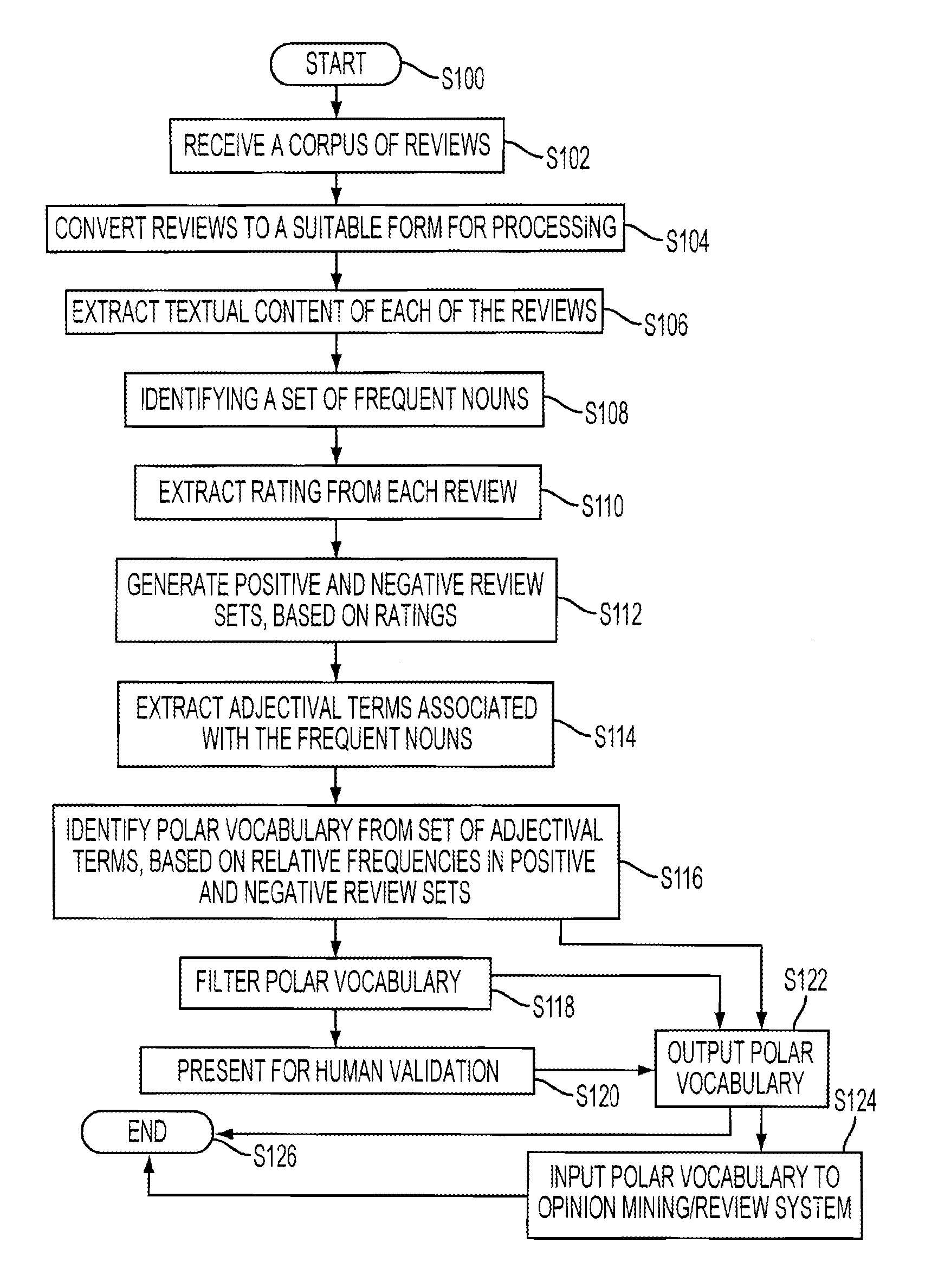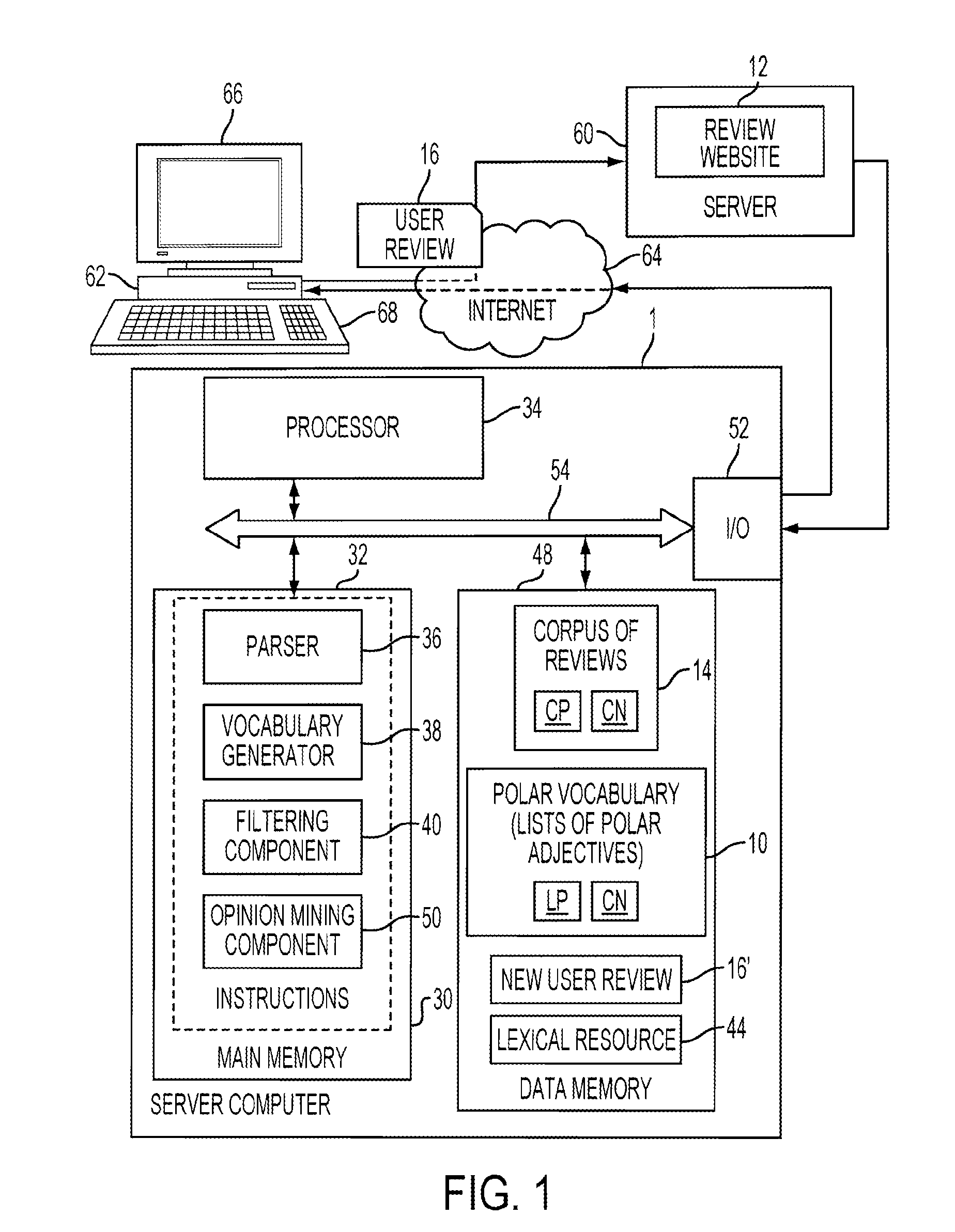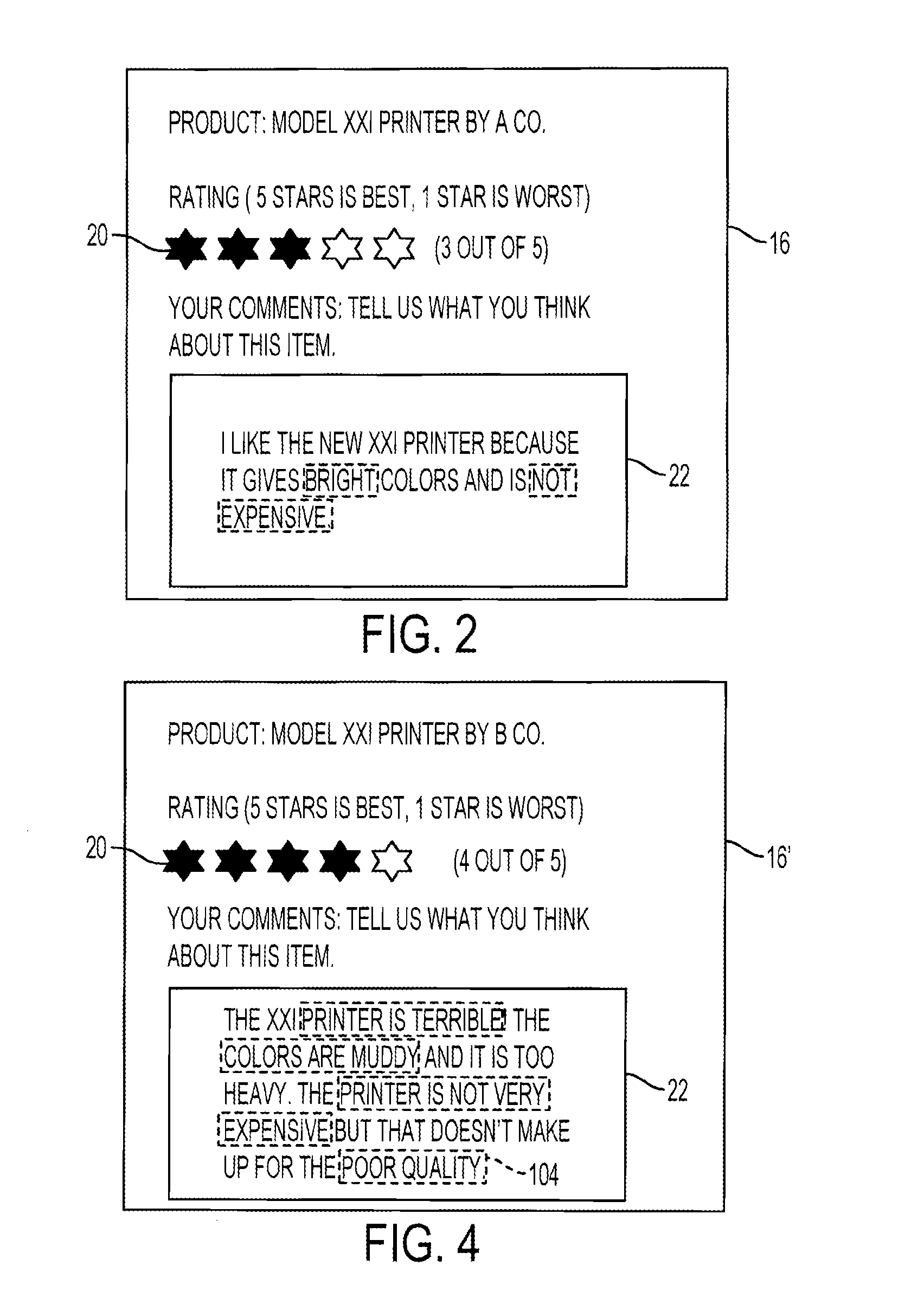Corpus-based system and method for acquiring polar adjectives
- Summary
- Abstract
- Description
- Claims
- Application Information
AI Technical Summary
Benefits of technology
Problems solved by technology
Method used
Image
Examples
example 1
Building a List of Polar Adjectives
[0147]A relevant corpus 14 from the Epinions™ website (www.epinions.com) was obtained. The reviews posted on the website consist of consumer-generated reviews, buying tips and advice, ratings, price information, and are searchable in a variety of ways from price to product type. From this website, 3700 customer reviews 16 were collected about products for a set of printer brands, which are referred to herein by the generic names A, B, C, and D. The reviews were converted an XML format compatible with the linguistic tools used (based on Xerox's XIP parser). A study of this corpus shows that opinions are expressed on the product itself (i.e., printers, scanners, fax, machines), but also on the characteristics or physical elements of this product. These characteristics can be the quality, the weight, the size, the price, and the like and the related elements can be the cartridges, the ink, and the like. It can also be observed that the effective opini...
example 2
Evaluation of the Polar Vocabulary
[0162]The impact of the discovered list 10 of polar adjectives was evaluated by including them in a polarity lexicon employed by the parser. The system uses the XIP parser to detect opinion expressions from semantic relations extracted from the user's comments and attach a polarity to each instance.
[0163]The Epinions™ reviews are structured in that at the end of each review, the user has to explicitly indicate if he or she recommends the product or not. Using this information, the test corpus is filtered in two sub corpora: one containing the recommended products, and the other containing the not recommended products. Setting the threshold of positive opinion instances at 50%, then if a review recommends a product, the system should extract more than 50% of positive opinions relations and if a review do not recommend a product, the system should extract more than 50% negative opinion relations.
[0164]From 3730 customer reviews about printer products ...
example 3
Detection of Incoherent Reviews
[0169]From 3730 customer reviews about printer products from the Epinions website, about 400 reviews are used to develop the system, and about 3330 are used to evaluate it. While studying this corpus, it appears that sometimes (about 2% of the reviews in this particular case), the rating or recommendation given by the author is incoherent with the content of the review (e.g., of the type illustrated in FIGS. 4 and 5).
[0170]The system provides useful results. In particular, it detects incoherent reviews. For example, in one 4 star review, the opinion review component extracts 63% of negative opinions and only 37% of positive opinions from it, which shows a clear discrepancy between the rating and the content. Looking at the reviews in the test corpus, there are about 2% of incoherent reviews (67 reviews where there is a mismatch between the rating and the content or between the rating and the recommendation). The system detects a discrepancy on 54 of th...
PUM
 Login to View More
Login to View More Abstract
Description
Claims
Application Information
 Login to View More
Login to View More - R&D
- Intellectual Property
- Life Sciences
- Materials
- Tech Scout
- Unparalleled Data Quality
- Higher Quality Content
- 60% Fewer Hallucinations
Browse by: Latest US Patents, China's latest patents, Technical Efficacy Thesaurus, Application Domain, Technology Topic, Popular Technical Reports.
© 2025 PatSnap. All rights reserved.Legal|Privacy policy|Modern Slavery Act Transparency Statement|Sitemap|About US| Contact US: help@patsnap.com



